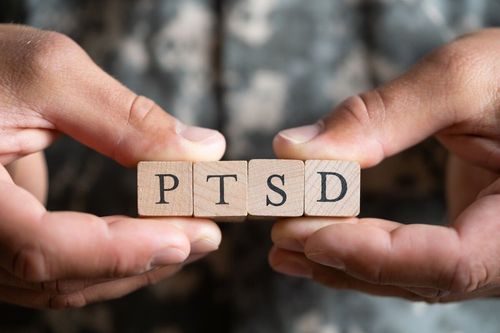Healing a trauma requires a targeted focus on the areas that have been injured by the trauma. The aim is to rebuild and strengthen these affected areas. Trauma healing can be metaphorically compared to a comet impact: The impact itself - the trauma - cannot be undone. But the destruction caused by the impact can be repaired.
It is crucial not to focus on the trauma itself. Otherwise, there is a risk of re-traumatization, which can further deepen and intensify the initial injuries. Instead, the damaged areas of life, such as one's own feelings or energy, should be strengthened in a targeted manner.
This approach not only minimizes the risk of reinjury, but also creates the basis for a sustainable trauma healing. Those who take care to restore the affected areas of their lives can emerge stronger from the healing process in the long run.
My name is Rico Brunner, and in this article I explore the topic: "How can trauma be healed without risking retraumatization?
What are the most common symptoms of trauma?
The most common symptoms of trauma manifest themselves in various forms and can affect both the emotional and the rational levels. Many of those affected experience a strong emotional overload, blockages, fears or even stress. They often feel "frozen" in their own behavior, lose their bearings and have difficulty finding the rhythm of life again. Perceptual disturbances can also occur and reinforce the feeling of being out of balance in one's own life.
There are basically two types of traumas: Major traumas and minor traumas. Major traumas often have such a massive impact that they almost completely block the ability to cope with life. Minor or even the smallest traumas, on the other hand, usually only affect certain areas of life. These manifest themselves, for example, in specific fears, excessive demands or blockages that can be dealt with in a targeted manner.
It is important to recognize these differences in order to find the right approach to trauma healing. Regardless of the extent of the trauma, the aim is to relieve the burdened areas and bring them back into balance.
How do you recognize unhealed trauma?
Unhealed trauma can often be recognized by the fact that certain topics or situations repeatedly trigger excessive demands. Fresh traumas are easier to identify as they are linked to current stress. It is more difficult with traumas that occurred a long time ago and are not consciously recognized.
Experience from my practice shows that it is not helpful to search for or analyze a trauma. Such an approach can reactivate the trauma, which can trigger re-traumatization and additional stress. Although traumas sometimes "sleep", they continue to subliminally block areas of life.
The key to healing trauma is to focus on strengthening the areas weakened by the trauma. Even if the trauma is not directly conscious, those affected can make progress by working specifically on the impaired aspects of their lives. With increasing strength in these areas, the trauma "falls away" without having to be reactivated directly.
This approach protects against re-traumatization and makes it possible to release blockages and bring one's own life back into balance.
What consequences do unhealed childhood traumas have on relationships?
Unhealed childhood traumas can affect relationships to varying degrees - they can either limit the ability to have a relationship or, in extreme cases, make a relationship completely impossible. It always depends on: "In which areas are the traumas located? Are they in an area that is extremely important for the relationship? Or are they in an area that is less relevant to the relationship?"
Example: If a trauma affects the attachment level so that a person has difficulty bonding, a relationship becomes extremely difficult or even impossible. Attachment is the foundation of every partnership, and an attachment disorder makes it almost impossible for the partner to strengthen the basis of the relationship, as this lies precisely in the traumatized area.
If, on the other hand, the trauma lies in areas such as dealing with conflict or self-worth, a functioning relationship is entirely possible. However, such challenges require a partner who can deal with these weaknesses and does not see them as a burden.
The extent of the impact therefore depends on how essential the traumatized area is for the relationship. Attachment disorders make the relationship much more difficult, as it is precisely this level that is central to a partnership and without it there is hardly any basis for a stable relationship.
Which techniques promote the healing of trauma?
Healing a trauma is less a question of specific techniques and more an individual search for what is really good for the person affected. Anything that promotes the inner strength of a traumatized person also supports trauma healing. For example, if someone realizes that yoga is good for them, this can have a healing effect. However, if the same person realizes that yoga triggers unpleasant feelings, it could even intensify the trauma.
It is crucial that the person affected finds out what strengthens them and focuses specifically on this. Inner strength is the key to healing a trauma, as it is the most efficient way of overcoming stressful injuries. Not only should inner strength as a whole be promoted, but also the weaker areas that have been affected by the trauma.
A sensible approach is to spend two thirds of the energy on further strengthening the strong areas and one third on stabilizing the weaker areas in a targeted manner. It is important not to analyze the problem itself, but to focus on the solutions. While rational problems can often be solved by talking, talking about traumatic problems often has a counterproductive effect and can increase stress.
Healing is most successful when the focus is on a balanced approach: strengthening one's own resources, addressing wounded areas and a clear focus on solutions rather than problems.
What role does distraction play in healing from trauma?
Distraction can play an important role in healing from trauma. It helps to alleviate the enormous pressure caused by trauma. By reducing the pressure, those affected gain more energy and strength, which makes them more resilient and enables them to better withstand the trauma.
The energy gained can then be used in a targeted way to pursue activities or approaches that promote and advance inner strength. Distraction is therefore not just a short-term fix, but an effective means of defusing the stressful effects of trauma and creating the conditions for the healing process.
The resulting relief makes it easier to focus on measures that will help to overcome the trauma in the long term. Distraction can thus become a valuable tool that creates space to build the necessary strength and stability.
What factors influence the healing of a trauma?
The healing of a trauma is influenced by several factors that depend on both the person and the type of trauma. One crucial aspect is the person's inner strength at the time of the trauma. If the person was in a stable phase of life when the trauma occurred, they can often process it more quickly. This inner strength protects against profound impairment, as the trauma penetrates less into the deep layers of the personality. However, if the person was weakened, the trauma often causes greater destruction, comparable to a comet impact, which leaves deeper traces.
Another important factor is the size of the trauma. Small traumas cause less damage, while larger traumas can have more profound effects. However, the magnitude of trauma is subjective. What is a major trauma for one person may be less distressing for another. And this brings us to the evaluation system: "How do I generally deal with injuries? What experiences have I had? How do I evaluate problems?" People who assess problems as very serious can experience trauma more strongly, while solution-oriented people are often less affected.
In my experience, it is important in trauma healing to focus not only on the objective extent of the trauma, but also on the perspective of the person affected. Even events that appear "harmless" from the outside can be traumatic for the person affected. This individual perception must be respected.
Healing is ultimately determined by a combination of many factors: the strength of the individual, the severity of the trauma and the personal assessment. These individual differences make it clear that trauma healing is a highly individual process that cannot be generalized.
How long does it take to heal a trauma?
The time it takes to heal a trauma can vary greatly - from one minute to many years. Three factors are decisive: "In which area is someone traumatized? How severe is the trauma? And how ready is the person to face their own strength rather than the trauma?"
My experience has shown that healing a trauma is not an exciting experience where the aim is to find out the "why". Rather, it is about working specifically on your own weaknesses and strengthening your personal power. By focusing on the effects of the trauma and not on the trauma itself, the healing process is often significantly accelerated.
However, many sufferers mistakenly believe that understanding the trauma is the key to healing. This misconception often leads to them going round in circles for years and unintentionally reinforcing the trauma. Instead, a solution-oriented approach allows them to focus their energy on their own strength and make progress.
In my view, this insight is the key to successful and long-term trauma healing: consciously focusing on one's own strength and building up the areas weakened by the trauma.
What role does the environment play in the healing of trauma?
The environment usually plays an important role in the healing of trauma. However, the decisive factor is whether the traumatized person is prepared to accept support from their environment. Even the best environment cannot bring about healing if the person affected is not open to help. This is a key point that is often underestimated.
In my experience, the support of the environment does not consist of solving all the problems for the person affected. This could even reinforce the trauma as it keeps the person in their passive role. Instead, it is about encouraging the person affected and promoting small, gradual progress. Example: If someone is afraid to leave the house, a first step could be to go out onto the balcony together once a day until this situation is no longer overwhelming. Only then could you go outside together - all in small steps and with the necessary patience.
The aim of the environment should be to activate positive behavior and promote the inner strength of the traumatized person. It is important not to underestimate the healing process: In most cases, it takes years to completely overcome a trauma. People who overcome trauma very quickly are usually exceptions.
The role of the environment is therefore not only supportive, but also motivating. It helps to gradually rebuild the strength and stability of the affected person by accompanying them, but also by challenging them to take their own steps.
Conclusion – How Can Trauma Be Healed Without the Risk of Retraumatization?
Trauma is not healed by constantly reliving the traumatic event, but by intentionally strengthening the areas that were wounded by it. This solution-oriented approach prevents retraumatization and allows for sustainable healing.
Key to successful trauma recovery are the reinforcement of inner resources, support from the social environment, and a conscious focus on personal stability. Every healing process is individual and requires patience, with the emphasis always placed on empowering one’s own inner strength.






